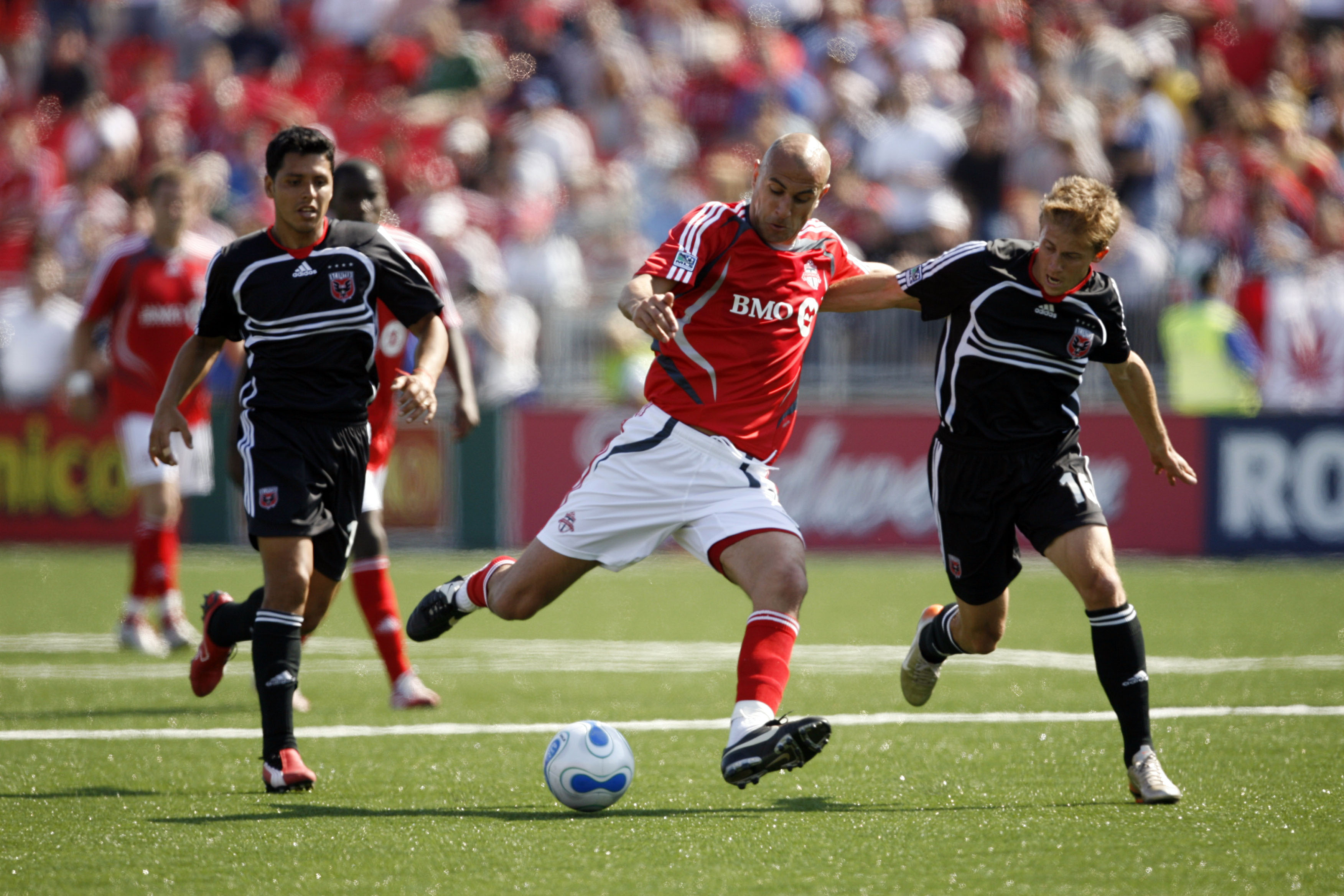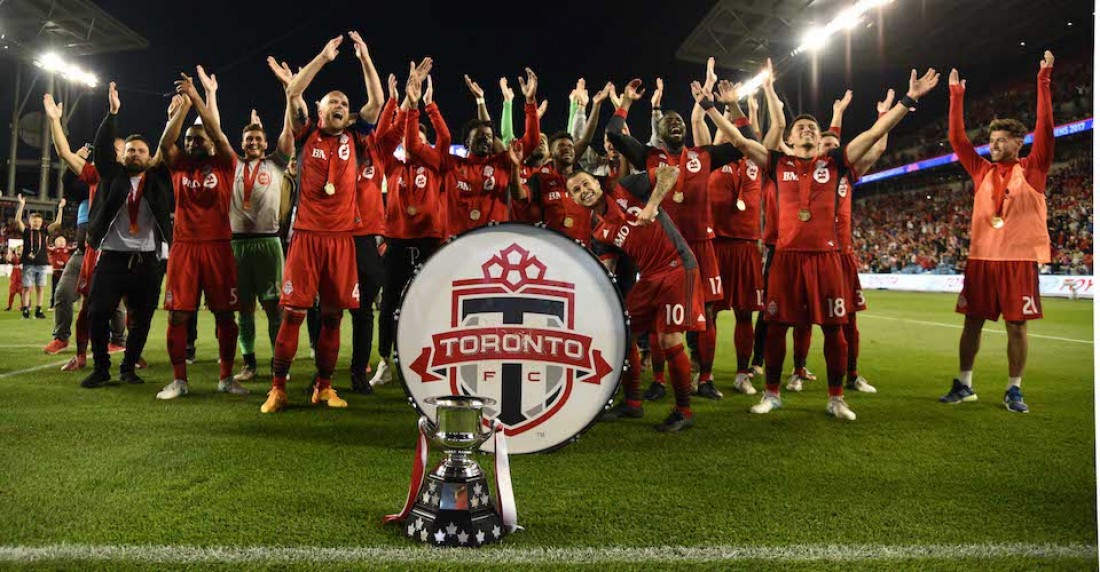On Saturday, December 9th, in front of a packed crowd at BMO Field, Toronto FC defeated the Seattle Sounders 2-0 to win the 2017 MLS Cup. Their win was decisive; they dominated the possession, defended well, controlled the rhythm of the game, created more scoring opportunities and capitalized on enough of them to ensure victory.
In the 20 days that have passed since this historic win, the city of Toronto has been abuzz with support for their Football Club. It has been evident and visible in person across the city, as well as all over social media.
A question which must be asked amid all this success, however, is when – or even if – it will ever translate into improvement in the performance of the Canadian National Men’s Soccer Team.
With popularity of soccer in Toronto and Canada at an all-time high, our Men’s National Team still toils in obscurity; at the time of the writing of this article, we are ranked 94th in the world, behind countries like Gabon, Belarus and Armenia.
The United States has seen a similar surge in the popularity of soccer in the 23 years since their hosting of the FIFA World Cup in 1994 and subsequent inception of Major League soccer the following year, and yet, they too have had a recent drop in the performance of their Men’s National Team, having failed to qualify for the World Cup for the first time since 1986.
Just what is it about Canadian and American soccer that has led to these poor results internationally? And what – if anything – can be done to capitalize on the popularity of Major League Soccer for the Canadian and United States Men’s National Teams to perform better in the future?
In this 3-Part article, I will provide my 3 suggestions, which began with Part 1 (instituting a limit on the number of foreign players playing in MLS, and non-Canadian players playing for TFC) last week. This week, we’ll have a look at Part 2.
Part 2: Major League Soccer must develop a 2nd and 3rd Division, and Canada must develop its own national professional league, with a promotion-relegation based system.
In other words, incentivise clubs to win.
This may seem surprising to many American or Canadian soccer fans, but Major League Soccer is one of the only professional soccer leagues in the world which functions without lower divisions and a promotion-relegation system (whereby the top teams from the lower division are promoted to the higher division, and the bottom teams from the higher division are relegated to the lower division).
Let’s start by looking at the Canadian teams in Major League Soccer. Canada presently has three professional teams competing in MLS (TFC, as well as the Montreal Impact, and the Vancouver Whitecaps), and another two in the North American Soccer League or “NASL” (FC Edmonton, and the Ottawa Fury).
Because neither MLS nor the NASL have a tiered-division system with promotion and relegation, none of the teams competing in these leagues (including the Canadian teams) are ever going to be truly motivated to win.
Of course, if a team in MLS od the NASL wins enough games, they will have the opportunity to make the play-offs, and eventually to win the league championship (the MLS Cup in MLS or the Soccer Bowl in the NASL), and this success could in turn bring more fans, exposure, and revenue to the team.
Regardless of any potential motivation that the prospects of success from winning games might bring, however, none of our Canadian professional teams will ever have to face the threat of being punished for losing through relegation to a lower division.
In the United States, the lack of incentive to win for professional clubs in MLS and/or the NASL must also be seen as detrimental to the success of their Men’s National Team. Provided they can continue to generate revenue by maintaining fans’ interest, attaining and maintaining a television deal, and attracting corporate sponsors, any American or Canadian professional club can survive and even thrive in MLS or the NASL without ever having to produce a winning team.
Unfortunately, it does not appear as though a promotion-relegation system will develop anytime soon in North America. In August 2017, MLS rejected a proposed $4-billion global media rights deal, involving a proposed partnership between MLS and the NASL, from international media company MP & Silva (a company owned by the owner of the NASL’s Miami FC, Ricardo Silva).
This does not bode well for the American and Canadian players – including the great majority of the US and Canadian Men’s National Team members – who ply their trade in these two leagues.
The need for a promotion-relegation system could not be more obvious. In any other country, anywhere else in the world, soccer teams who finish in last place in their division (or, in many cases, also in 2nd or 3rd last place) get relegated to a lower division.
This means that the teams playing in MLS and the NASL (including the Canadian teams) are the only soccer teams in the world who do not have an incentive to win to avoid being relegated to a lower division.

Toronto FC and star player Danny Dichio (pictured here) struggled in their first seasons in MLS
Ironically, prior to their recent – and unprecedented – success in MLS, there could not have been a more perfect example of how the lack of incentive to win has affected a Canadian professional soccer team than TFC, which originally entered the league as an expansion team in 2007. Here is a summary of TFC’s record (point total, place finished in their division, and place finished in the league) in their first 9 seasons in MLS:
| SEASON | POINT TOTAL | STANDING (DIVISION) | STANDING (OVERALL) |
| 2007 | 25 | 7th (out of 7) | 13th (out of 13) |
| 2008 | 35 | 7th (out of 7) | 12th (out of 14) |
| 2009 | 39 | 5th (out of 7) | 13th (out of 15) |
| 2010 | 35 | 5th (out of 8) | 12th (out of 16) |
| 2011 | 33 | 8th (out of 9) | 16th (out of 18) |
| 2012 | 23 | 10th (out of 10) | 19th (out of 19) |
| 2013 | 29 | 9th (out of 10) | 16th (out of 19) |
| 2014 | 41 | 7th (out of 10) | 16th (out of 19) |
| 2015 | 49 | 6th (out of 10) | 12th (out of 20) |
In any other professional soccer league, in any other country in the world, TFC would have been relegated in at least two and possibly as many as five of their first nine seasons in Major League Soccer. And it’s not just TFC; Montreal Impact, another Canadian MLS team, finished with just 39 points, 9th out of 11 in their division and 17th out of 19 overall in the 2017 MLS season.
You get the point.
It seems only logical then, that the Canadian players competing in these leagues and for these teams (many of whom end up representing Canada at the senior international level) may end up lacking some of the competitive edge needed to be successful in World Cup qualification and, ultimately someday, at the World Cup. For the Americans, who missed out on World Cup qualification for the first time in 30 years, the same lack of competitiveness also likely holds true.
If Major League Soccer can find a way to set up and enforce incentives for its teams to win through a tiered-division system with promotion and relegation, then perhaps the United States and Canadian Men’s National Teams can be more successful at the international level in the future.
I’d love to hear your thoughts about this topic. Drop me a line here to get the conversation started.


Your focus on a single entity house league ( MLS ) clearly indicates the level of “selling” of the game in Canada and the U.S. the fact MLS teams are single entity house leagues clearly indicates they will never develop players at a level to staff national team player pools.
Until you support the ending of MLS and the creation of an independent tiered open entry pyramid with two divisions in Canada with a national first division and a regional second tier with open movement based on promotion / relegation you will not see the growth of “professional soccer” in Canada.
Game development in the USA can only grow with a National single table league of 20 teams in first division and regional second tier of up to 80 teams along with a third tier based on smaller geographic zones.
Given the US soccer association has opted for a close commercial linkage with the MLS single entity “House League” development in the USA will continue to be curtailed.
Thanks for your comment Douglas! You make an excellent point in comparing MLS teams to “house leagues”. They lack incentive to develop players at the youth level and to win at the senior level. Your suggestion of the creation of an “independent tiered open entry pyramid with two divisions in Canada” could probably take shape in the form of the new Canadian Premier League (CPL). What do you think?